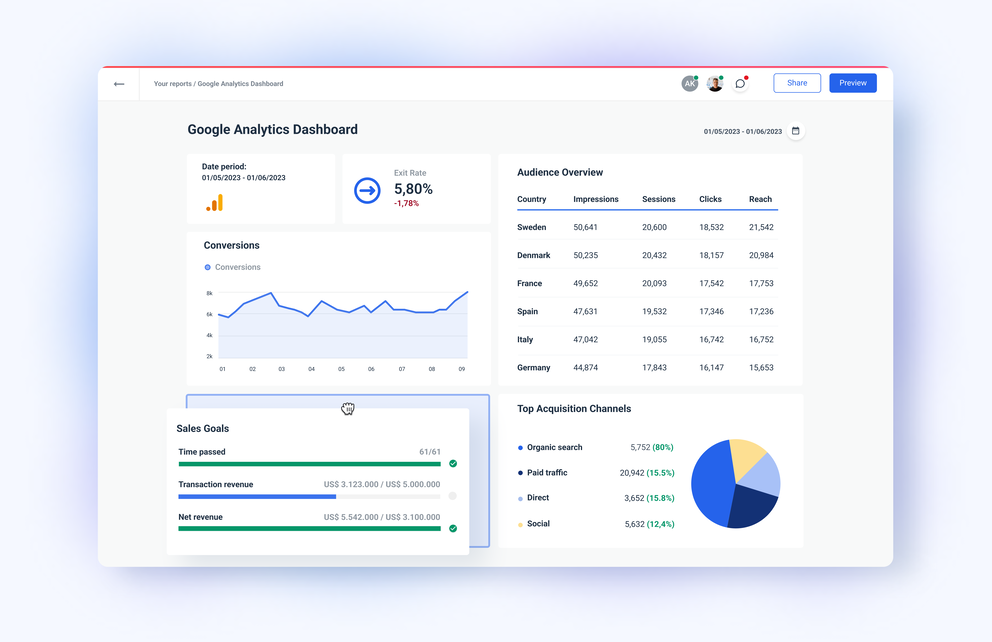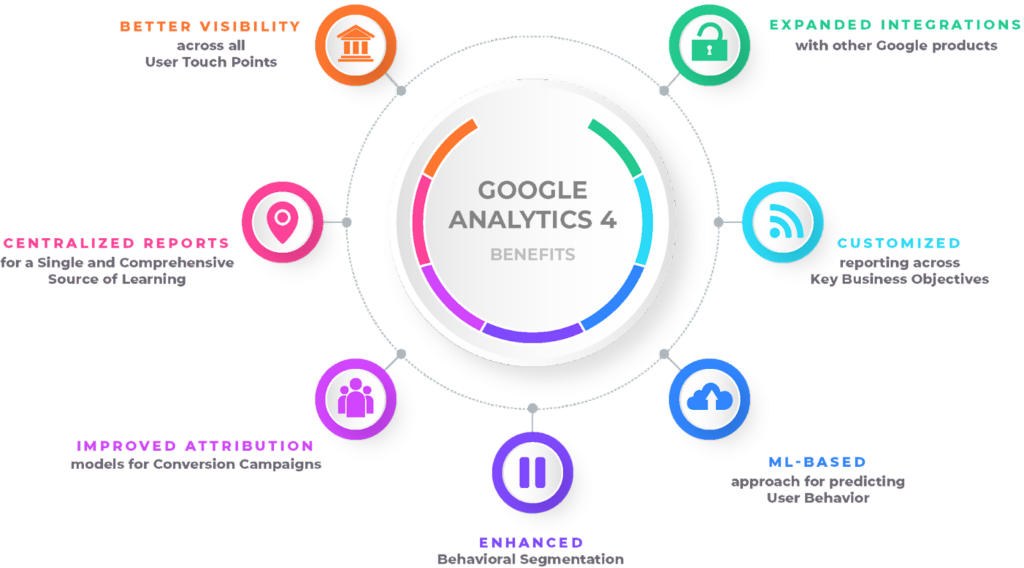When Does the Google Analytics Tracking Code Send an Event Hit to Analytics? Timing and Finest Practices Explained
When Does the Google Analytics Tracking Code Send an Event Hit to Analytics? Timing and Finest Practices Explained
Blog Article
Enhance Your Search Engine Optimization Technique With Effective Google Analytics Tracking Code
Incorporating Google Analytics tracking code into your SEO technique is a critical step towards attaining measurable outcomes. What particular methods can you adopt to optimize the impact of this data on your Search engine optimization efforts?

Comprehending Google Analytics Basics
To effectively take advantage of Google Analytics for Search Engine Optimization, it is necessary to comprehend its fundamental concepts. Google Analytics acts as an effective device for tracking and assessing internet site traffic, offering insights that are important for enhancing online search engine efficiency. At its core, the system enables customers to keep an eye on customer actions, web traffic resources, and essential efficiency indicators (KPIs) such as bounce prices and session durations.
Experience with the customer interface is important. Secret areas include the Audience, Purchase, and Behavior tabs, each offering valuable information. The Target market area provides demographic insights, aiding to customize material to target customers successfully. The Procurement tab exposes just how visitors get to the website, whether via natural search, paid advertisements, or social media sites, directing tactical adjustments in advertising and marketing efforts.
Comprehending metrics such as natural web traffic volumes and conversion rates is essential for reviewing search engine optimization efficiency. Inevitably, grasping these essentials enables digital online marketers to harness the full potential of Google Analytics, driving notified decisions that boost total SEO strategies. By establishing a strong foundation, services can successfully assess their efficiency and recognize possibilities for improvement in their online presence.
Establishing Tracking Code
Appropriately setting up the monitoring code is vital for precise data collection in Google Analytics. The first step entails developing a Google Analytics account and residential or commercial property, where you will obtain a special monitoring ID. This ID is crucial for linking your website's information to your Google Analytics account.
Once you have your tracking ID, integrate the tracking code snippet right into your site's HTML. This is usually positioned in the header section of each page to ensure it lots early in the web page rendering procedure. If you're utilizing a Material Management System (CMS) like WordPress, numerous plugins streamline this procedure, permitting you to add the tracking code without straight HTML editing.
After implementing the tracking code, it is essential to test its capability. You can make use of the Google Tag Assistant device to validate if the monitoring code is correctly installed and operating. In addition, keep track of the real-time coverage feature in Google Analytics to verify that information is being collected appropriately.
Making sure that the tracking code is appropriately established up lays the foundation for efficient data analysis, allowing you to make informed choices to enhance your search engine optimization strategy and total internet site efficiency.
Secret Metrics to Screen
Determining crucial metrics to check is essential for understanding the performance of your SEO approach via Google Analytics. By focusing on certain data factors, you can assess the influence of your optimization efforts and make educated choices to improve performance.
One of the main metrics to track is organic website traffic, which shows the number of visitors reaching your site through online search engine. This statistics mirrors the total health of your search engine optimization method. Next off, keep an eye on the bounce price, which shows the portion of visitors that leave your website after seeing just one page. A high bounce price might signify that your material is not fulfilling individual expectations or that your landing web pages require improvement.
Additionally, think about tracking conversion rates, as these metrics reveal exactly how well your website fulfills its company goals, such as generating sales or leads. Search phrase rankings click reference are also crucial; monitoring modifications in keyword placements aids evaluate the efficiency of your targeted SEO initiatives. Lastly, assess the typical session period, which suggests customer interaction and content importance. By very closely complying with these crucial metrics, you can get valuable understandings right into your SEO technique's efficiency and identify locations for renovation.
Studying Customer Habits
Comprehending user behavior is vital for fine-tuning your SEO method and maximizing site efficiency. when does the google analytics tracking code send an event hit to analytics?. By examining how visitors connect with your site, you can reveal useful insights that notify your content and layout decisions. Google Analytics offers a wide range of data on user engagement metrics, such as bounce prices, time on website, and web page sights per session. These metrics aid determine which web pages reverberate with your audience and which may need optimization.
In addition, tracking user flow can reveal typical navigating paths, highlighting prospective traffic jams or areas for renovation. Comprehending the demographics, rate of interests, and geographic areas of your visitors enables even more tailored material that talks to their requirements. Utilizing division functions in Google Analytics further improves your ability to analyze customer habits by permitting you to compare various target market groups.
Additionally, monitoring conversion prices and individual actions can supply insights into the performance of your calls to action and total website layout. This holistic sight of customer actions is necessary for making notified decisions that improve user experience and drive higher involvement, eventually adding to improved SEO efficiency.
Leveraging Insights for Search Engine Optimization
Consistently leveraging understandings gotten from user habits evaluation can substantially enhance your SEO efforts. By utilizing Google Analytics, you can identify key metrics such as bounce rates, session duration, and individual flow, which reveal just how visitors connect with your web content. These insights enable you to determine areas needing improvement, such as high leave web pages or underperforming keywords.

Additionally, tracking natural traffic sources offers clearness on which channels are most efficient, permitting you to designate resources strategically (when does the google analytics tracking code send an event great site hit to analytics?). By analyzing conversion rates together with web traffic data, you can recognize which web pages drive actual business results, refining your SEO strategy even more
Incorporating these understandings into your content strategy not just improves presence yet also promotes a much more user-centric technique. Ultimately, a data-driven search engine optimization strategy notified by analytics not just increases rankings however additionally straightens your objectives with customer expectations, leading to sustained growth and engagement.
Conclusion
Efficient implementation of Google Analytics tracking code substantially improves a SEO technique by giving important insights into individual behavior and traffic sources. Keeping track of key metrics such as organic website traffic, bounce prices, and conversion rates facilitates the recognition of improvement areas. Additionally, assessing individual demographics and involvement metrics enables a much more targeted material strategy. Eventually, leveraging these understandings adds to fine-tuning SEO efforts, driving even more pertinent website traffic, and boosting overall website performance.
Including Google Analytics tracking code into your Search engine optimization strategy is a pivotal step towards attaining quantifiable outcomes. At its core, the system makes it possible for customers to monitor customer behavior, website traffic sources, and key performance signs (KPIs) such as bounce prices and session periods.
Understanding individual behavior is vital for refining your SEO strategy and making best use of website performance.Consistently leveraging understandings gotten from user actions evaluation can substantially boost your Search engine optimization efforts.Efficient execution of Google Analytics tracking code significantly enhances a Search engine optimization strategy by providing vital understandings right into user actions and website traffic sources.
Report this page